Thanks for the info, impressions, encouragement and advice. Other than opening up and slapping back together your AO200, what exactly was responsible for it sounding better afterwards? My sincerest apologies if it was explained, but I read your post 3 or 4 times without being further enlightened.
My AO200 sounded phenomenal right out of the box and actually improved after about a 1/2 dozen+ hours of moderate to loud output levels. With "soft clipping" enabled, I gave it a decent workout at a small (40 ppl) outdoor family gathering driving 2 sets of stacked Sony SS-CS5's connected in an "MTM" parallel configuration about 12ft apart. Volume levels were frequently set into the mid and upper 50's. I might've even had it into 60's territory a few times! The AO200 never even reached lukewarm temperatures and hit those Sony's HARD and CLEAN like they were made for it. Also got several compliments on how nice sounding the setup was. I just didn't realize at the time the channels being reversed until I got home with everything and used headphones.
I wholeheartedly agree with your theory of SMSL underselling these new Infineon/Merus amps. One could probably say the same about Sabaj and their impressive A20a amp. In these instances "Greed Is Good" because we, the consumer, are the beneficiaries of corporate greed for a change.
You can also ask
@Toku San who is an electrical engineer first, and an audiophile of equal measure. There is a phenomenon that happens with all passive electronic parts where electrical current passes through a device such as an amplifier which has many capacitors, many resistors, many diodes, many types of capacitors for different applications, and rectifiers in some cases. These devices take a short to longer as in 100+ hours before some of them (the more expensive and exotic parts, not found in Class D amplifiers most of the time) to settle down and their parameters as well as performance levels off. The ultra-ultra high end amplifier companies, companies that sell amplifiers in the low 100's sometimes not even 100 amplifiers put their amplifiers on a test bench with all manner of equipment measuring for the smallest variance to ensure that the customer or end user gets exactly what was promised. This process takes many hours, usually several days before the manufacturer is satisfied that the amplifier passes all of their extremely stringent quality and performance control tests. A very well known speaker company mills the copper traces for their loudspeaker crossover networks out of solid virgin copper that is several mils thick to ensure the best conductivity and sound.
There are several phenomenon at work, one of them is Gaussing. Old CRT televisions, Pre LED, OLED, and used a cathode array tube to project an image inside the vacuum sealed glass screen were sensitive to non-shielded speakers, so it was common place for speaker companies to warn customers not to place their speakers too close to a television screen. It would warp the screen, change the colour spectrum, often permanently damaging the television if left there for a prolonged time. This happens with nearly all electronics. Electro Magnetic Waves interfere with everything. Passing DC current and also AC current through amplifier circuits somehow straightens out the direction of the electrical flow. Capacitors are like tiny instant discharge batteries that can store a huge or small amount of current depending upon use and application. In the power supply of an amplifier, it is there to deliver instant power or reserve power when needed for loud passages (think bass). These capacitors have an operating window and lifespan. Some exceed 15000 hours at rated power and current measured in amps or watts. The less expensive amplifiers typically have capacitors that range between 1000-5000 hours for rated lifespan and at full operating temperature. These parts are wear items and they peak in performance at some point and maintain that standard before they eventually die from either use, or shelf life. Resistors also have current passing through them and therefore they not only heat up, but they change properties ever so slightly, even a 1% tolerance resistor will change characteristics. When you combine all of these variables, something a bit peculiar happens very often though not all the time. What happens is with an amplifier, some of the rough edges you heard at first might soften a little. An amplifier may sound less harsh. Or the bass might suddenly appear to have more authority. It's usually noticeable in the midrange where our ears are naturally tuned to hear human voices. Suddenly the singer has more presence. They sound more alive. This is widely known as a phenomenon, but it has not been adequately explained by maths, or by measurements.
For example I have many amplifiers, some are tube amplifiers. One particular tube amplifier has only 4.5 watts per channel of output, or 9 watts of output in total. Damping factor is next to zero. Actually probably zero on this amplifier. However it makes music that is so life like that it's shocking. Bare in mind that the 2 capacitors that are called coupling capacitors that act on the input tube and out to the output tubes cost more than a single DA-9 or A0200. They are also rated at an insane 1200VAC! I assembled it about 4 years ago in it's final iteration after replacing countless coupling capacitors to find not only the right value but the right particular construction and construction material. I'm a lifelong Pink Floyd or David Gilmour fan so I used his music for a baseline on what I think his guitars should sound like. I've heard enough systems that play his music convincingly that I think I know what his "sound" is. So choosing the parts was as important as the 4 tubes themselves. The tubes alone cost many times more than the DA-9.
This isn't a bragging thing. I am trying to explain to you that music reproduction isn't purely about measurements. It's true that you need measurements to confirm what you are hearing and vise versa. This is why the exotic speaker and amplifier companies spend countless hours "voicing" their creations. My little amplifier can play Tupac and Biggie Smalls as well as NWA. It doesn't sound as good as the DA-9 or my A0200. It just doesn't have the controlled bass. The bass with the tube amplifier with hip-hop music or hardcore gangsta rap is flabby and loose. Not very controlled. A class D amplifier usually has much more control over the speaker cones movement.
To make this as short as possible, you heard an improvement. That improvement was not in your imagination. You have good enough ears and good enough equipment that you can hear that change, and it is usually a sudden improvement even though miniscule improvements continue for some time after that. The first big improvement is real. It coincided with when all of those passive parts started to work in unison as a complete system. People like to argue that measurements are measurements. I've been in the Hi-Fi industry professionally for over 30 years, Toku-San has been around for longer. We both understand that there is something that we can't quite measure that is going on, it's likely a combination of variables that causes this sudden change. We call it burning-in, or sometimes it's referred to as aging, but the effects are noticeable and if you can notice it, that should be enough for you. Some like to argue about measurements in laboratory conditions. But let me ask you this. Do you think an amplifier sold for the $250-$300 goes through stringent quality control, including powering up every single amplifier and checking that they perform exactly as originally designed, or is it more likely that they take a random unit off the assembly line, run a short test and stamp it with a passed QC sticker. A QC sticker can also mean that it was assembled but nothing more. That is a form of legitimate QC. It's not what most of us would consider ethical, but there are no industry standards that govern these companies.
May I suggest that you follow this thread also:
https://www.audiosciencereview.com/...l-da9-wait-and-see-or-solid-buy.21927/page-55
It's probably worth reading through all 55 pages, there are several pages that you can ignore as you will discover. The trouble really is that people in general have been sold on this partially correct view that measurements are king. They are not. Is a 1000hp Honda the same as a 1000hp Ferrari in driving experience. In quality? Absolutely not. Is there a huge amount of satisfaction by beating a 1000hp Ferrari with a honda? Of course there is. And yes, 1000 horsepower honda's do exist. They are insanely fast. Of course it's still a civic or something similar. The SMSL amplifiers, the Topping DAC's and other far east products are like those crazy fast honda's. They're good to a point. But then the build quality and the pride of ownership isn't anywhere near close.
Unfortunately there isn't enough money in researching your competitors product and why it is good or bad. There's no money in understanding how the human ear which uses tiny hair follicles, the reverse of a record cartridge and transfers that through an interface like an amplifier into sound that we hear. Of course the most important bit is the actual voice or speaker. Then it is the input stage of an amplifier. Just how the signals are processed and then moved on to the power amplifier whose sole job is to amplify the input signal.
You heard what you heard. The explanation is convoluted but also actually simple if you decide that your ears tell you more than measurements.
Bare in mind that no two rooms are the same. The same model speakers from the same era but used by different owners in different climates will change the sound of those speakers. The variables are countless.
My best advice for you is to read magazines like Hi-Fi+ from the UK. Sure you probably can't afford mostly all of the equipment, but it gives you a target and they explain the technology, and they get into the mechanics of how we hear music. They maybe the last mostly honest magazine still available. Also 6moons is a good site to get information about exotic products with reviews. Since each and everyone of us has differing degrees of hearing loss, as our homes and rooms are completely different, you cannot expect to go to a store and purchase something that sounds great at a the local high street shop and expect it to perform the same. Of course speakers need a lot more time to break-in as they are mechanical by design and have a lifespan. They are stiff and do not want to move at first. After many hours of use, they loosen up and just like your experience with the amplifier, it suddenly opens up.
I'll probably catch a lot of slack for posting this but I am prepared for that. I've been in the Hi-Fi industry since 1992-1993, I took a little break but I was always involved in the industry and I am currently 44 years of age. I'm just shy of 30 years of professional hi-fi retail and manufacturers representative/distributor for a great many companies in the early to late 90's. By the time the 2000's rolled around, the industry shifted into cheaper is better. Come late 2000's some of the younger guys became more financially successful and hi-fi got it's second wind.
The answers to your very valid question are spread all around. This isn't the only forum out there. You cannot take any forum for it's word as many are sponsored outright or are given other incentives to make only positive comments or reviews. Hearing is extremely subjective. Find something you like, learn and understand why you prefer it to other items, then you have your own personal baseline to work from. Use measurements that can't be disputed as a guideline. They will help you to narrow down your search.
Apologies for the lengthy reply, I hope you can make sense of it. I did my best not to ramble and present not just subjective but also objective reasons for what you asked about. You have every reason to be confused. The top manufacturers guard their secret methods for good reason.
I hope this helps. And again I apologise for the lengthy response. Feel free to send me a message if you have specific questions, hopefully I can help you figure out what you're finding out. There are many ways to get the sound you want, many ways to ruin what you've already got. I think I can help you there. I prefer to keep the thread clear of a lot of hearsay so please send me a private message. I'll be happy to try and help!
Short messages on the board really don't give the opportunity to delve deeper, so I understand where you had difficulty. It's certainly not your fault!

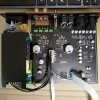
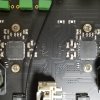
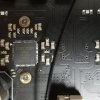
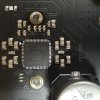
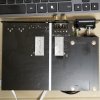
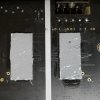
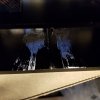
![20210827_175622[1].jpg](/forum/data/attachments/149/149837-af78767b33572e8356f950fd07d39d61.jpg)

